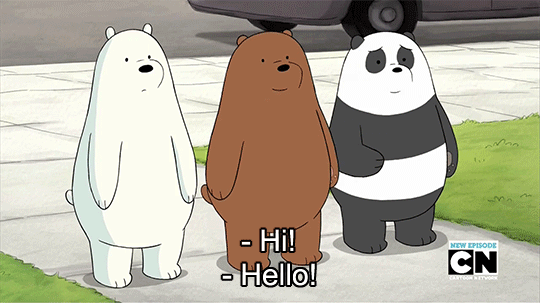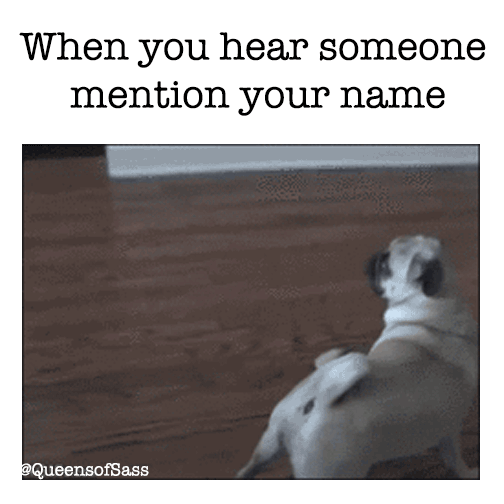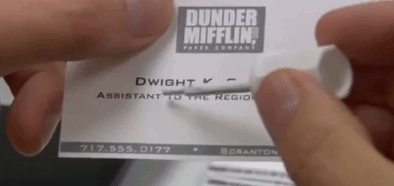Self-introduction in your first language is easy, but doing it in a foreign language can be daunting. If you just started learning Korean, this post is perfect for you because today we will be learning how to do a self-introduction in Korean.
I will be teaching you some basic phrases and words, along with some tips that will make every Korean you meet say, “한국어를 잘 하시네요!” (hangugoreul jal hasineyo) i.e. “You speak Korean well!”
Considering that we usually do self-introductions when meeting new people, we will be using mostly polite or formal Korean speech. You might know, it’s very important to get the speech levels in Korean correct. We don’t want to be disrespectful during our first interactions, right?
I’ve made this summary chart here so you can get what you’re looking for. Read on to get all the details, and context for each expression.
| Audio | English | Pronunciation | Speech Level |
|---|---|---|---|
| How are you? (or Hello) | annyeonghaseyo? | polite | |
| How are you? (or Hello) | annyeonghasipnikka? | formal | |
| Pleased to meet you. | mannaseo bangawoyo. | polite | |
| Pleased to meet you. | mannaseo bangapseupnida. | formal | |
| Pleased to meet you for the first time. | cheoeum boepgetseupnida. | formal | |
| What is your name? | ireumi eotteoke doeseyo? | polite | |
| What is your name? | seonghami eotteoke doeseyo? | formal | |
| My name is Jay. | je ireumeun jeiyeyo. | polite | |
| My name is Jay. | je ireumeun jeiipnida. | formal | |
| You speak Korean well! | hangugeoreul jal hasineyo! | polite | |
| How old are you? | naiga eotteoke doeseyo? | polite | |
| How old are you? | myeot sariseyo? | polite | |
| 1 | hana | Korean Native Number | |
| 2 | dul | Korean Native Number | |
| 3 | set | Korean Native Number | |
| 4 | net | Korean Native Number | |
| 5 | daseot | Korean Native Number | |
| 6 | yeoseot | Korean Native Number | |
| 7 | ilgop | Korean Native Number | |
| 8 | yeodeol | Korean Native Number | |
| 9 | ahop | Korean Native Number | |
| 10 | yeol | Korean Native Number | |
| 11 | yeolhana | Korean Native Number | |
| 12 | yeoldul | Korean Native Number | |
| 13 | yeolset | Korean Native Number | |
| 14 | yeolnet | Korean Native Number | |
| 15 | yeoldaseot | Korean Native Number | |
| 16 | yeoryeoseot | Korean Native Number | |
| 17 | yeorilgop | Korean Native Number | |
| 18 | yeoryeodeol | Korean Native Number | |
| 19 | yeorahop | Korean Native Number | |
| 20 | seumul | Korean Native Number | |
| 30 | seoreun | Korean Native Number | |
| 40 | maheun | Korean Native Number | |
| 50 | swin | Korean Native Number | |
| 60 | yesun | Korean Native Number | |
| 70 | ilheun | Korean Native Number | |
| 80 | yeodeun | Korean Native Number | |
| 90 | aheun | Korean Native Number | |
| 1 (when used with countable noun) | han | Korean Native Number | |
| 2 (when used with countable noun) | du | Korean Native Number | |
| 3 (when used with countable noun) | se | Korean Native Number | |
| 4 (when used with countable noun) | ne | Korean Native Number | |
| 11 (when used with countable noun) | yeolhan | Korean Native Number | |
| 12 (when used with countable noun) | yeoldu | Korean Native Number | |
| 13 (when used with countable noun) | yeolse | Korean Native Number | |
| 14 (when used with countable noun) | yeolne | Korean Native Number | |
| 20 (when used with countable noun) | seumu | Korean Native Number | |
| 20 years old | seumu sal | age in Korean | |
| 31 years old | seoreunhan sal | age in Korean | |
| I am 45 years old. | jeoneun maheundaseot sarieyo. | polite | |
| I am 45 years old. | jeoneun maheundaseot saripnida. | formal | |
| Where are you from? | eodieseo wasseoyo? | polite | |
| I am from America. | migugeseo wasseoyo. | polite | |
| I am from America. | migugeseo watseupnida. | formal | |
| What is your nationality? | eoneunara saramieyo? | polite | |
| I am American. | miguk saramieyo. | polite | |
| I am American. | miguk saramipnida. | formal | |
| Canada | kaenada | country | |
| Philippines | pilripin | country | |
| India | indo | country | |
| Indonesia | indonesia | country | |
| Spain | seupein | country | |
| Singapore | singgaporeu | country | |
| Vietnam | beteunam | country | |
| United States | miguk | country | |
| Brazil | beurajil | country | |
| Turkey | teoki | country | |
| Egypt | ijipteu | country | |
| Iran | iran | country | |
| South Korea | hanguk | country | |
| China | jungguk | country | |
| What is your occupation? | jigeobi mwoyeyo? | polite | |
| What is your occupation? | museun il haseyo? | polite | |
| I am an office worker. | jeoneun hoesawonieyo. | polite | |
| I am an office worker. | jeoneun hoesawonipnida. | formal | |
| actor | baeu | occupation | |
| pilot | jojongsa | occupation | |
| chef | yorisa | occupation | |
| nurse | ganhosa | occupation | |
| soldier | gunin | occupation | |
| attorney | byeonhosa | occupation | |
| doctor | uisa | occupation | |
| teacher | seonsaengnim | occupation | |
| student | haksaeng | occupation | |
| I work at Samsung. | jeoneun samseonge danyeoyo. | polite | |
| I work at Samsung. | jeoneun samseonge danipnida. | formal | |
| I like dramas. | deuramareul joahaeyo. | polite | |
| I like dramas. | deuramareul joahapnida. | formal | |
| I like games. | geimeul joahaeyo. | polite |
First Greeting

If you are meeting someone for the first time, don’t forget your first greeting before you start introducing yourself. In polite Korean, you can say:
안녕하세요? (annyonghaseyo)
which literally translates to, “Have you been well?” This is the Korean equivalent to our standard ‘hello’ greeting. If you happen to be in a formal situation, you can say:
안녕하십니까? (annyonghasimnikka)
In Korea, it is a common gesture to bow when greeting each other. You don’t have to do a full-on 90 degrees bow; that’s usually too much for most situations. Just a gentle 15 degrees bow or a slight nod of the head should suffice.

Also, don’t be surprised if someone extends their hand for a handshake. Just remember to shake with your right hand and your left hand supporting underneath, as if you are offering your hand to the other person. Add a bow for an extra dose of respect.
In return, the person you are greeting will probably greet you the same way as you did.
If you want to learn other ways of saying ‘hello’ in Korean, you can refer to this post here.
“Glad to meet you!”

After your first greeting, you may want to say something like, “Glad to meet you,” before you introduce your name. While that is fine, I usually skip this part. But if you really mean it, you can say it by all means.
If you are meeting someone in person, you can say:
만나서 반가워요.
(mannaso bangawoyo)
Pleased to meet you. (polite)
or
만나서 반갑습니다.
(choeum bwepkketsseumnida)
Pleased to meet you. (formal)
You can use the above two phrases on someone you already know since both phrases express gladness in being able to meet that person, whether for the first time or not.
You may also have heard of another Korean phrase:
처음 뵙겠습니다.
(choeum bwepkketsseumnida)
Pleased to meet you for the first time. (formal)
You should use the above phrase for formal settings, like during business meetings etc. Also, 처음 (choeum) means ‘first time’ so it is used when meeting someone for the very first time.
“What is your name?”

This is when your self-introduction really starts: introducing your name. Before we learn how to introduce our names in Korean, it is equally important to learn the phrase, “What is your name?” in Korean to make things more conversational.
이름이 어떻게 되세요?
(ireumi ottoke dweseyo)
What is your name? (polite)
성함이 어떻게 되세요?
(songhami ottoke dweseyo)
What is your name? (formal)
The two phrases above may be a bit much to remember. If you cannot remember them well, then just remember these two key words: 이름 (ireum) and 성함 (songham). Both words mean ‘name’, just that 성함 (songham) is the honorific form of 이름 (ireum).
So if you hear any of the two keywords being mentioned as part of a question directed to you, the likelihood of them asking for your name is high. And to that question, you can answer:
제 이름은 ____예요/이에요.
(je ireumeun ____yeyo/ieyo)
My name is____. (polite)
or
제 이름은 ____입니다.
(je ireumeun jeieyo)
My name is____. (formal)
All you need to do now is to fill in the blank with your name. So, if I were to introduce myself to you, I would say:
제 이름은 제이예요.
(je ireumeun jeieyo)
My name is Jay. (polite)
or
제 이름은 제이입니다.
(je ireumeun jeiimnida)
My name is Jay. (formal)
You have gone from memorising phrases to being able to form personalised sentences on your own. Great job! The person that you have been introducing yourself to should be pretty impressed by now. That person may say something like this to you in return:
한국어를 잘 하시네요!
(hangugoreul jal hasineyo)
You speak Korean well!

Yes, it’s the phrase that you saw in the introduction of this post and yes, you will hear this phrase a lot if you can speak Korean (even if it’s just saying ‘hello’ and your name in Korean).
Koreans appreciate it when non-Koreans take the effort to learn their language. They are not stingy with their praises so if someone praises your Korean language skills, accept humbly and say a simple ‘thank you’ in Korean.
“How old are you?”
Some say that age is a sensitive topic so many approach it with caution. But in Korean culture, it is actually important to know someone’s age because it will determine whether you will need to use honorifics when speaking with that person.

So, you may be asked:
나이가 어떻게 되세요?
(naiga ottoke dweseyo)
How old are you? (polite)
or
몇 살이세요?
(myot sariseyo)
How old are you? (polite)
Let’s approach these two phrases the same way as before when we were learning how to ask for a person’s name. If you cannot remember them well, then just remember these two keywords: 나이 (nai) and 살 (sal)
So if you hear any of the two keywords being mentioned as part of question directed to you when you are doing your self-introduction, you can pretty much get ready to reply with your age:
저는 ____살이에요.
(joneun ____sarieyo)
I am ____ years old. (polite)
or
저는 ____살입니다.
(joneun ____sarimnida)
I am ____ years old. (formal)
Now, you will need to fill in the blank with your age. To do that, you will need to know Native Korean Numbers. To really master it, you will need to do some memorisation but to keep things simple, you just need to remember your own age.

Let’s learn how to use the table above to find out our age in Native Korean Numbers. Since we will be using the numbers with the word 살 (sal) which means ‘years old’, you will need to look at the rightmost column as reference.
E.g. If you are ‘20 years old’, then you are 스무 살 (seumu sal).
Let’s go up higher up the age table. If you are ‘25 years old’, then you are ‘twenty-five years old’ in English. Now, translate each word directly to Korean and you are 스물다섯 살 (soreundasot sal). Take note though, that only 20 is pronounced as 스무 (seumu).
If your age has a 1, 2, 3, or 4 in the ones place, you will need to say 한 (han), 두 (du), 세 (se), or 네 (ne) before the word 살 (sal).
E.g. 서른한 살 (soreunhan sal) - 31 years old
So, putting everything we have learnt together, if you are 45 years old, how can you say, “I am 45 years old,” in Korean?
저는 마흔다섯 살이에요.
(joneun maheundasot sarieyo)
I am 45 years old. (polite)
or
저는 마흔다섯 살입니다.
(joneun maheundasot sarimnida)
I am 45 years old. (formal)
Once you have introduced your age and you managed to find out the age of the person you are talking to, you may need to use Korean honorific titles if the other person is older than you.
That’s all for age! Let’s move on and talk about which country you are from.
“Which country are you from?”

For this part, there are different ways to say which country you are from. Before we cover that, let’s learn, “Which country are you from?” in Korean first.
There are two ways that you may be asked the question. A person may ask you where you are from:
어디에서 왔어요?
(odieso wassoyo)
Where are you from? (polite)
To this question, the reply is actually very simple. Since the word 어디 (odi) means ‘where’, all you have to do is to replace 어디 (odi) with the country you are from. If you are from America, you can say:
미국에서 왔어요.
(migugeso wassoyo)
I am from America. (polite)
or
미국에서 왔습니다.
(migugeso watsseumnida)
I am from America. (formal)
Take note that you should say the above phrase only if you are outside of the country that you say you are from.
Another way you may be asked is when the person asks you about your nationality:
어느나라 사람이에요?
(oneunara saramieyo)
which literally translates to, “Which country person are you?”
어느 (oneu) means ‘which’ and 나라 (nara) means ‘country’, so to reply, all you need to do is to replace 어느나라 (oneunara) with the country you are from. Assuming you are from America, you can say:
미국 사람이에요.
(miguk saramieyo)
I am American. (polite)
or
미국 사람입니다.
(miguk saramimnida)
I am American. (formal)
Of the two ways to introduce where you are from, the latter gives you more flexibility since it can be used in almost all kinds of situations, regardless of where you are located. You can use it while texting as well.
Here are some countries and their names in Korean:
캐나다 (kaenada) - Canada
필리핀 (pilripin) - Philippines
인도 (indo) - India
인도네시아 (indonesia) - Indonesia
스페인 (seupein) - Spain
싱가포르 (singgaporeu) - Singapore
베트남 (beteunam) - Vietnam
미국 (miguk) - United States
브라질 (beurajil) - Brazil
터키 (toki) - Turkey
이집트 (ijipteu) - Egypt
이란 (iran) - Iran
한국 (hanguk) - South Korea
중국 (jungguk) - China
“What is your occupation?”

When being asked about your occupation, you may be asked:
직업이 뭐예요?
(jigobi mwoeyo)
What is your occupation? (polite)
or
무슨 일 하세요?
(museun il haseyo)
What kind of work do you do? (polite)
In the examples above, the two keywords to listen out for are 직업 (jigob) which means ‘occupation’ and 일 (il) which means ‘work’.
To that, you can reply:
저는 ____예요/이에요.
(joneun yeyoieyo)
I am a ____. (polite)
or
저는 ____입니다.
(joneun imnida)
I am a ____. (formal)
and fill in the blank with the name of your occupation. If you work in an office as an employee, you can say:
저는 회사원이에요.
(joneun hwesawonieyo)
I am an office worker. (polite)
or
저는 회사원입니다.
(joneun hwesawonimnida)
I am an office worker. (formal)
Here are some examples of different occupations in Korean:
배우 (baeu) - actor
조종사 (jojongsa) - pilot
요리사 (yorisa) - chef
간호사 (ganhosa) - nurse
군인 (gunin) - soldier
변호사 (byonhosa) - attorney
의사 (uisa) - doctor
선생님 (sonsaengnim) - teacher
학생 (haksseung) - Student
Let’s say you work at Samsung. You are really proud of it and would like to share it as part of your self-introduction. You can say:
저는 삼성에 다녀요.
(joneun samsonge danyoyo)
I work at Samsung. (polite)
or
저는 삼성에 다닙니다.
(joneun samsonge danimnida)
I work at Samsung. (formal)
As with other examples, you can simply replace 삼성 (samsong) with any other company name or place to fit your self-introduction.
“I like K-dramas.”

One thing that you can do to add more personality to your self-introduction is to talk about what you like. If you like television dramas, you can say:
드라마를 좋아해요.
(deuramareul joahaeyo)
I like dramas. (polite)
or
드라마를 좋아합니다.
(deuramareul joahamnida)
I like dramas. (formal)
In the example above, 드라마 (deurama) means drama. You can replace the word with anything else that you like and it will work just as well. Just take note if the word ends with a consonant (e.g. 게임 kkeim - game), you need to use 을 (eul) instead of 를 (reul).
E.g. 게임을 좋아해요.
(kkeimeul joahaeyo)
I like games. (polite)
Conclusion
Up to this point, you should be able to give a self-introduction of your name, age, nationality, occupation, and even talk about things that you like. That is a big step toward being able to make many new Korean friends.
Yes, it may feel scary to go up to someone new and introduce yourself in a foreign language, but I promise you that it will only get easier with practice.
Would you like to help others perfect their self-introduction skills? Sign up as a Hilokal trainer here.



